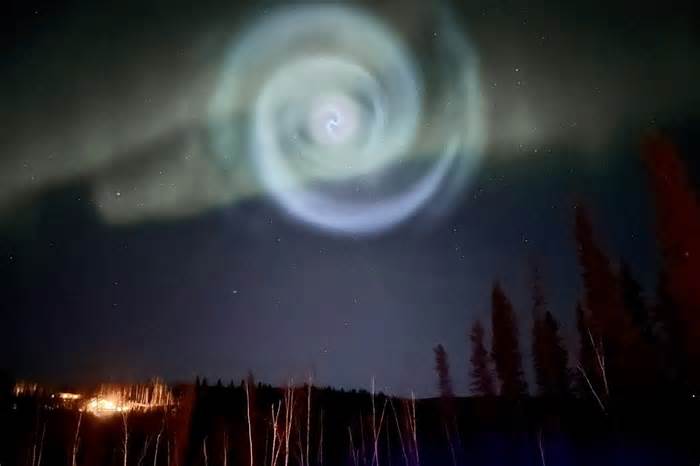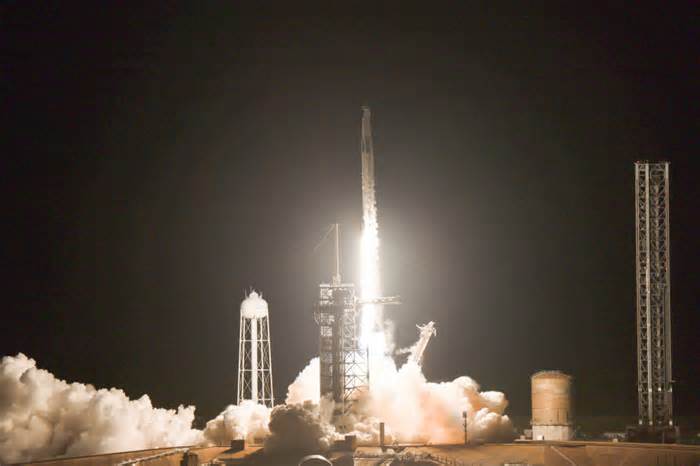
SpaceX prepare for Starship Flight 6, another Booster...
- by NASASpaceFlight.com
- Nov 18, 2024
- 0 Comments
- 0 Likes Flag 0 Of 5

Click here to Join L2
So far, SpaceX has made tremendous strides from flight to flight in the Starship Program. Flight 1 was all about getting off the pad and getting data on booster performance. There were not many expectations of success for Booster 7 and Ship 24. Even though the stack only got to 40 km, SpaceX achieved at least clearing the tower and gathering important data on booster performance.
Flight 1 paved the way for Flight 2 and Booster 9 to have a flawless ascent to stage separation using a new method for Starship not present on Flight 1, which never reached staging. This was hot staging where the ship ignites its engines while still attached to the booster. Unfortunately, Ship 25 was lost just shy of the ship engine cutoff. However, Booster 9 was lost during boost back, and Ship 25 was lost near the end of its burn.
Taking the lessons learned from Flight 2, Flight 3 was a huge step forward. Booster 10 passed the boost backburn but was lost during the landing burn. Ship 28 made it into space but lost roll control during the coast phase and started to tumble. This resulted in the heat shield not facing the atmosphere constantly, and Ship 28 burned up on reentry.
Ignition on Starship Flight 3 (Credit: BocaChicaGal for NSF)
Then came Flight 4, which saw the first engine out on the accent with the booster since Flight 1. However, Booster 11 completed its boost backburn and its landing burn before tipping over and exploding. SpaceX gained confidence after this landing to press on for the catch on Flight 5.
During the coast phase, Ship 29 didn’t do any extra testing compared to Ship 28 and just coasted into reentry. With a perfect attitude and full control, Ship 29 reentered. During reentry, plasma got into the port-side forward flap hinge, nearly melting it off. However, Ship 29 maintained control and completed a flip-and-burn with a soft splashdown in the Indian Ocean.
After waiting for a few months due to modifications to the chopstick systems and regulatory hurdles, SpaceX launched Flight 5 of Starship. After all of the successes in the past and with the accuracy of Flight 4, the goal was to catch a Booster. The ascent was flawless, with no engine outs, hot staging, and boost back burn.
Liftoff of Starship Flight 4 (Credit: BocaChicaGal for NSF)
While Ship 30 headed for reentry to test its new heat shield, Booster 12 was sent on a trajectory to return to the launch site. After what seemed like a flawless reentry, Booster 12 ignited its engines for the landing burn and maneuvered between the chopsticks for a catch. After adjusting the engines, the pins landed on the landing rails, and Booster 12 was caught.
Ship 30 then completed its reentry, with the heat shield fairing much better than Ship 29 but still with some burn-through on the Forward Flaps. However, it landed perfectly on target in the Indian Ocean and was even caught by SpaceX’s buoy cams. With an on-target ship landing and a booster catch now achieved, SpaceX is poised to try and repeat the goals while trying some new things on Flight 6.
Booster 12 coming in for Landing (Credit: Max Evans for NSF)
Timeline and Trajectory
Regarding Timeline and Trajectory, Flight 6 is near-identical to Flight 5. There are a few changes to the booster events of a few seconds that should help refine the flight profile with lessons learned from Flight 5. However, with the ship, there is a noticeable addition: the return of an in-space Raptor relight demo. This is set to occur at T+37 minutes and 34 seconds. This will help verify the Raptor firing in space and should help SpaceX push to orbit on Flight 7 or 8.
Starship Flight 6 Timeline (Credit: SpaceX)
The trajectory is exactly the same as that of Flight 5; however, the launch time is completely different. So far, SpaceX has chosen to launch early in the morning for weather conditions and clear views during the coast phase. For Flight 6, SpaceX intends to launch in the afternoon to have a daylight ship landing. The window opens at 4 p.m. CST and lasts for 30 minutes.
During the final stages of reentry, SpaceX will fly Ship 31 at a higher angle of attack to test the limits of flap control and future landing profiles. Assuming Ship 31 makes it through reentry, there is the potential of gaining Ship landing views like the old suborbital hop days.
Here is another angle captured by @NASASpaceflight of what appears to be crews installing the Flight Termination System on Ship 31. This reinforces as to why SpaceX has not destacked Ship 31 from Booster 13. https://t.co/lJBh6JDv67 https://t.co/Km4guWkIKW pic.twitter.com/lOeI4vIQxS
Please first to comment
Related Post
Stay Connected
Tweets by elonmuskTo get the latest tweets please make sure you are logged in on X on this browser.
Sponsored
Popular Post
Tesla: Buy This Dip, Energy Growth And Margin Recovery Are Vastly Underappreciated
28 ViewsJul 29 ,2024






 Energy
Energy


















